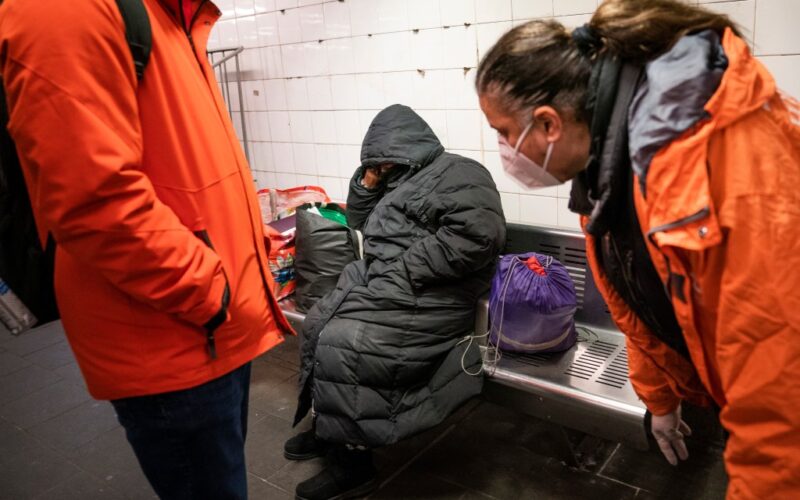The various city or state or MTA (or combined) intervention efforts have been doing a very commendable job of finding our unfortunate neighbors on the streets or the subways who are acting in ways that are dangerous to themselves or others. While untreated mental afflictions can now be addressed under state law, the same should be extended to folks suffering from addiction.
Some of these people are ranting and raving, threatening violence against strangers or exhibiting tendencies to hurt themselves, others are quietly living in filth or unclothed or unshod in frigid temperatures. None of that is acceptable.
Brought in for evaluation, often the diagnosis of the disturbed person is an untreated mental illness and in those instances, New York State law, now thankfully amended by the Legislature at the request of Mayor Adams and Gov. Hochul, allows for proper psychiatric care to help restore mental health.
But if the underlying cause of the dangerous behavior was drugs, from legal alcohol to illegal narcotics, once an individual has sobered up and dried out, the patient can just walk out the door of the hospital, looking for more booze or drugs. Maybe next time, that person — or someone harmed by him — won’t be as lucky.
While addiction is not a mental illness, in certain people, addiction can induce dangerous behavior very similar to that caused by mental ailments.
Adams now wants New York to join 37 other states, like Massachusetts, with the power under law to hold a person who was brought in for observation during the painful withdrawal period. That is when the physical cravings for more alcohol or drugs would otherwise keep the addict hooked. But by breaking the hold of the substance over a body and a mind, a life can be restored. The majority of states permit this; so should New York.
Barry Williams / New York Daily News
Mayor Eric Adams. (Barry Williams / New York Daily News)
Finding people who fit this pattern — needing help from powerful addictions that are driving dangerous behavior — is already going on across New York City. Those people should get that help.
Operating now in the city are 17 Safe Options Support (SOS) teams run by the New York State Office of Mental Health. They assist those “experiencing chronic homelessness with permanent housing and stability.”
Then there also is the joint city/MTA Subway Co-Response Outreach Teams (SCOUT) composed of a clinician and two MTA police officers helping out folks on the trains and in stations. And the city-run Partnership Assistance for Transit Homelessness (PATH), which has Department of Homeless Services nurses and outreach staff working alongside NYPD transit police conducting overnight patrols in certain subway stations.
Be it SOS or SCOUT or PATH or whatever new acronym there may be, the various intervention teams should be coordinated so as to not overlap in the same stations or streets and to extend the coverage to stations or streets that otherwise might be missed.
When the cause of the dangerous behavior is found to be an underlying mental illness, medical help can be imposed under the law, even without the agreement of the sick person. So why should it be different if the reason for the dangerous behavior is something coming out of a bottle or a syringe or a pill, an addiction which, like mental illness, can be treated?
Addicted people who are hurting themselves or others can get help in 37 states, why not in New York?








